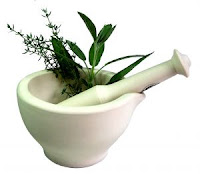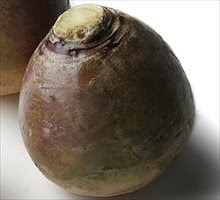If you’re fortunate, you wake rested, the kids aren’t bouncing on your bed (your kids, your bed, not the neighbor’s), the dog hasn’t peed/thrown up on the comforter, and faithful spouse did not give up and go in the spare room leaving you alone snoring! You lay there, drifting in and out of that nice dream, not the scary one about high school, tests, and nakedness at speech day! I had a peaceful awakening this morning. I could hear the birds twittering outside:
real birds twittering for
real, in the
real world.
I drifted in and out of a dream about our beach cities ‘encouraging’ the replacement of all plastic bags, plastic and Styrofoam takeout containers with recyclable, biodegradable, and compostable options. Imagine the environmental shift, the support of many small businesses developing alternatives to plastics, the jobs, the reduction of oil usage, and the taxes? Hmm, press snooze and dream on!
I don’t know why I had this dream last night: part deadlines; part faithful spouse’s comment that change seemed to be in the air. You’ve heard the quote, “There is nothing permanent except change.”
Heraclitus. Isn’t it how we plan for, and accept change that determines how well we function in the present? We get overwhelmed with the present reality and the sheer volume of what needs to change. The true visionaries (and faithful) amongst us attune to the subtle breezes of change in the way a dog or cat lifts its nose to seemingly undetectable aromas on the breeze. Visionaries respond to that change with innovation, the true American entrepreneurial spirit. Then they continue to be motivated and function, despite naysayers.
Let’s point our collective olfactory equipment (noses) skyward, and sense the change wafting along the breezes. Flying into Dublin, Ireland, in 2003, I read an in-flight magazine article about the introduction of a countrywide (Federal) tax on plastic bags in January 2002. For every plastic bag the consumer used at checkout, a 33 cents (Federal) tax was levied. The monies collected went into a ‘green’ Federal fund for environmentally sustainable initiatives.
Let’s leave the politics of Federal (or and/or a state/local) taxes to the Tea Parties, and instead, look at the collective, public benefit. Within weeks of Ireland’s new tax, there was a 94% reduction in the use of plastic bags. By August 2002, a staggering 3.5 Million Euros (2.37 Million dollars) was collected and redirected into green initiatives. Source: BBC. A citizen commented, “Banning the bag was painless… The streets went from being littered with plastic bags to clean virtually overnight.” Source:
http://www.thedailygreen.com/. Note this was a tax on plastic bags, not a ban on use.
While in the UK recently, I noticed at checkout that there was a new 33 cents ‘price’ on plastic bags. As a tourist, I had no option but to ‘buy’ the bag: enough of a sting, that I pondered the issue. I think the banning of plastic bags and replacement with reusable, and biodegradable options is next. Government has interceded, enforcing change to jumpstart public adoption. In the Environmental Stake races, the entrepreneurial horse is already out of the gate, the public adoption horse lagging, the convenience and mass availability horses are in the lead, and the future gain horse is barely in the picture.
Other countries are following Ireland: Chinese and Australian schemes have yet to meet with success and even local efforts have foundered on strong opposition. A puzzling reaction to change. China estimates a saving of 37 million barrels of oil by banning plastic bags. Source: The Daily Mail. Uganda, Bangladesh, Taiwan, and Singapore have banned or discouraged use (Source: BBC). In March, 2002, Bangladesh banned polythene bags after it was found that they were blocking drainage systems and had been a major culprit during the 1988 and 1998 floods that submerged two-thirds of the country (Source: BBC). Every continent has seen efforts to ban plastic bags for the environmental load is huge. Globally we use 42 billion plastic bags a month (Source:
http://www.reusablebags.com/). That’s billions and billions of barrels of oil (massive energy use), clogged waterways, and air/soil pollution.
Plastic bags are just a large tip of an equally large iceberg. I believe we’ll see mandatory replacement of plastics and Styrofoam food service containers with biodegradable, compostable alternatives soon. Also watch the plastic water bottle industry. Let’s hope we see some exciting innovation there before a ban is imposed.
How does this all apply to us in the USA? Look West young man (and lady). Some cities in California have already instituted bans on plastic grocery bags (Berkeley, San Francisco, Oakland in 2007). The City of Los Angeles is considering the banning of Styrofoam takeout containers. The New York City council aimed for a bag ban, but settled for a requirement that companies that hand them out must also take them back.
Let’s not wait for our government to step in and slap our wrists with a tax, and decide for us. Aren’t our wrists already sore enough from the plastic bag handles and from picking the darn things up around town? Let’s show our leaders we’re responsible enough to institute change bottom up. Let’s form community groups using all the free tools and skills we have in our own communities to encourage the early adoption of this change that is on the breeze. There’s Facebook, Twitter, local private business owners full of entrepreneurial spirit, business and technical skills. Let’s work with our local, state, and yes, Federal governments to implement a grass roots adoption of biodegradable compostable packaging, food service, grocery and restaurant takeout, before the environmental load of this makes the cost even higher.
Incidentally, quietly, without fuss or customer backlash, Good For You Market was the first grocery business in Delaware to self-impose a ban on plastic grocery bags in January of 2003. It’s no coincidence we’d just gotten back from Dublin, having seen the results first hand.
I’ll close with a few of my favorite quotes on change.
“People are very open-minded about new things - as long as they're exactly like the old ones.” Charles Kettering.
“Change your life today. Don't gamble on the future, act now, without delay.” Simone De Beauvoir
“Cut the "im" out of impossible, leaving that dynamic word standing out free and clear-possible.” Norman Vincent Peale.
Finally, my favorite, “Change is inevitable, except from vending machines.” Unknown.
Have a safe day, full of exciting possibilities. Stay warm; those fall breezes are bringing changes.


















